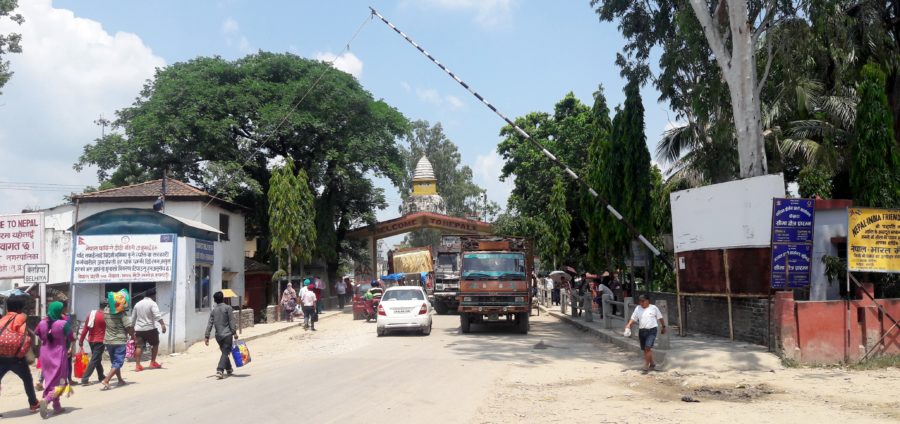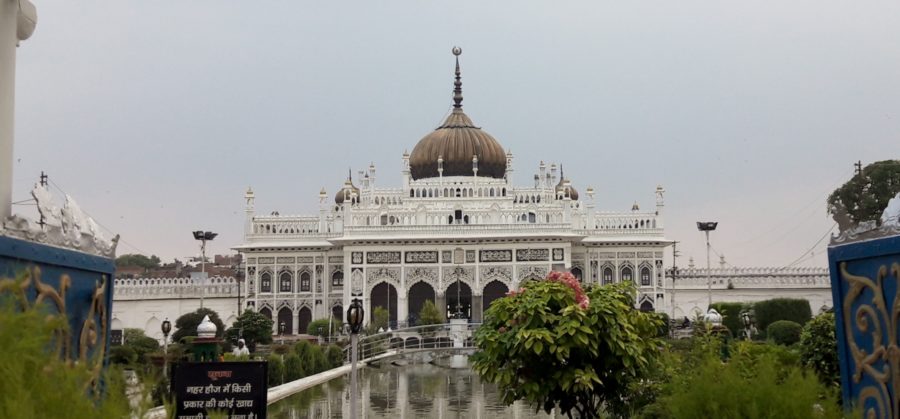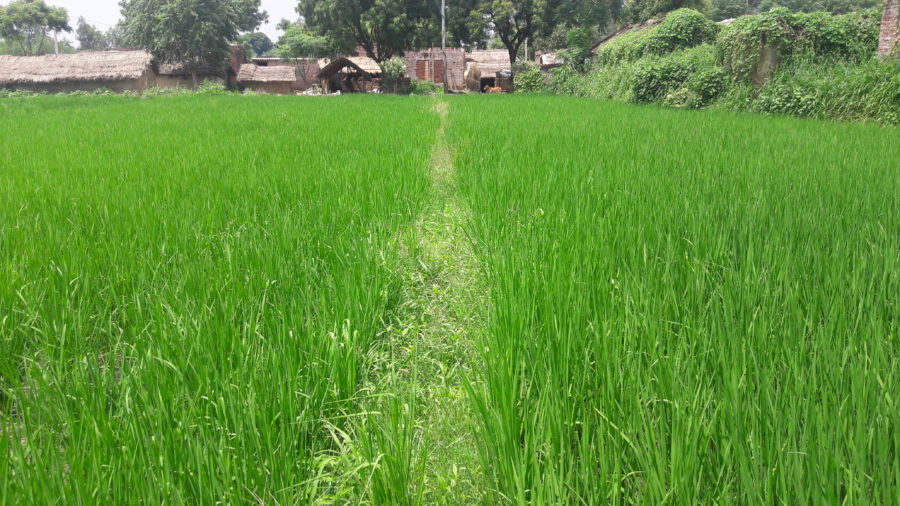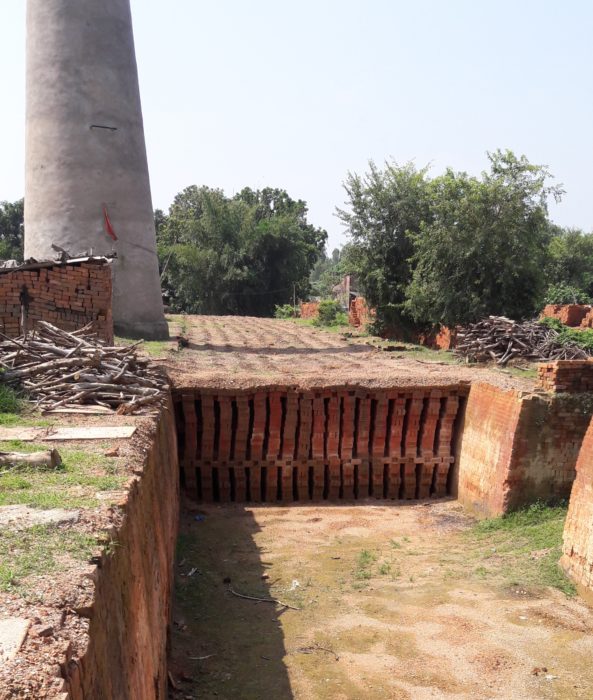30th September 2016 Kolkata, India
Learning Visit

I was sitting with a group of policemen and border officials in a police hut drinking sweet tea. The younger ones were looking at me anxiously as I started to ask them questions about their work and what they were doing. It was late morning and it was hot outside – around 35°C (or 95 Fahrenheit). But we were being cooled by lots of fans in the hut.
We were at the border crossing between India and Nepal at Sunauli, in the north east of the state of Uttar Pradesh. As I discovered through my questioning, it’s the busiest crossing point between the two countries. Indians and Nepalese don’t need visas to enter each other’s territory, and around 25,000 people cross in each direction every day. It’s also the main crossing point for tourists between the two countries.
I was accompanied by a guide who had set up the meeting through the local chief of police. She was also interpreting, as most of them preferred to speak in Hindi. I heard her lace a sentence or two in Hindi with the phrase “learning visit”.
I took up the theme and explained that I was visiting from Kolkata because I wanted to learn about the challenges they faced in policing the border, even though UP (as many Indians called Uttar Pradesh) wasn’t one of the states I covered. I wanted to be able to compare what I learnt in UP with the states I cover in East and North East India.
They gradually relaxed as we chatted about the numbers of foreigners and goods vehicles that crossed each day. They told me of the smuggling they uncovered, and explained how many staff they needed for border checks and passport control. They gave me permission to take photographs of the border, and were amused when I asked my guide to take photos of me looking at Nepal.
Accelerated learning
My “learning visit” to the border was part of an immersion programme available to all diplomatic staff posted to India. India is a vast country, with the largest UK diplomatic network. To engage with such a large and diverse country requires experiencing it firsthand. So an immersion programme for India was set up for new staff to gain a wider knowledge of the country from day one.

In my training in London ahead of my posting, I heard about the importance of “accelerated learning”. To be a more effective leader, you should “scale the learning curve quickly”. Knowing the culture and mores of another country is central to diplomatic work – we need to understand what makes a place tick. We also need to understand the economic, political, social and geographical environment. From our Kolkata office alone, we cover 13 Indian states (and one Union Territory) that hold around 340 million people.
For my programme of “accelerated learning”, I wanted to see rural India. Diplomats are based in capital cities or the most populous cities in the largest countries. But around 70% of India’s population still live in rural areas. Their lives are very different from those of people who live in the metro cities like Kolkata or Mumbai.
Although not in my region, UP borders three of the states I cover. It’s the heartland of the “Hindi belt”, the Hindi speaking states of northern India. It lies in the mid-Ganges plains, endowed with the rich alluvial soil so important for agriculture. It is the most populous state around 215 million (more than the whole of Brazil in an area more or less the size of Britain). It’s politically important because 80 members of the Lok Sabha, the lower house of the Indian Parliament, out of a total of 545. As there are state elections in UP next year, my colleagues in Delhi suggested I spend time there.
The USP of UP
So last month, I flew to Lucknow, the state capital. There, I saw the state Assembly in session and spoke to several MLAs, Members of the Legislative Assembly as state legislators are called, about their roles and how they conducted their work. I met representatives of the political parties and different communities. I spent a day at a local newspaper and heard about how they reported on events in the state. I also toured the town and saw the rich Mughal architecture to rival that of Agra and Delhi.
I travelled 250 miles (400 km) from Lucknow to the border at Sunauli, and stayed overnight at two different towns in the east of the state. I visited a village and talked to the villagers about their livelihoods, their crops and how they viewed this year’s monsoon. I visited the site in Ayodhya where a mosque was destroyed in 1992 and which is still in dispute.

So what did I learn in the week I spent in UP?
I saw how in rural areas the monsoon determines not just how plentiful is the rice crop, but whether other cereals crops can be grown after the rice has been harvested. I learnt that cow dung is still used for fuel, despite the widespread availability of electricity. I saw how plots are sub-divided between families and how gaining a job in a local town can be an important alternative source of income for a family.
I saw many chimneys which were part of brick kilns. In the village, I learnt how clay bricks are moulded, dried and stacked with gaps between them in a pit. They are covered with finished bricks and earth around a tall chimney. Burning coal and other fuel is then dropped into the gaps. The flow of hot air rises through the bricks and out of the chimney gradually bakes the bricks.

I also discovered how hard it is to live in rural areas when there is no electricity, or when it fails. When I was walking around the village, I was so hot and sweating so profusely, I found it hard to concentrate. So the villagers were spared the detailed cross examination that I gave the policemen and border guards at Sunauli.
As for the politics, elections are difficult to predict because, as one interlocutor described it, there are too many variables involved. These range from the influence of incumbency (or in UP’s case anti-incumbency); the record of a state government and its leaders; the need for a charismatic candidate for chief minister; the continued importance of caste and religion; and, in UP’s case, the mix of national and regional parties.
At the end of the visit, I realised that I had only scratched the surface of UP. I could have sat at a desk and read and read about the challenges to agriculture, or the complexity of political life or the limitations of power supply in India. But there’s no substitute for seeing the lines in the rice fields, feeling between your fingers the dust kicked up by the constant traffic at a border crossing, smelling the oils from the devotional lamps at a temple, or hearing the raucous debate in a state Assembly.
Fantastic article.
Thank you – glad you think so.